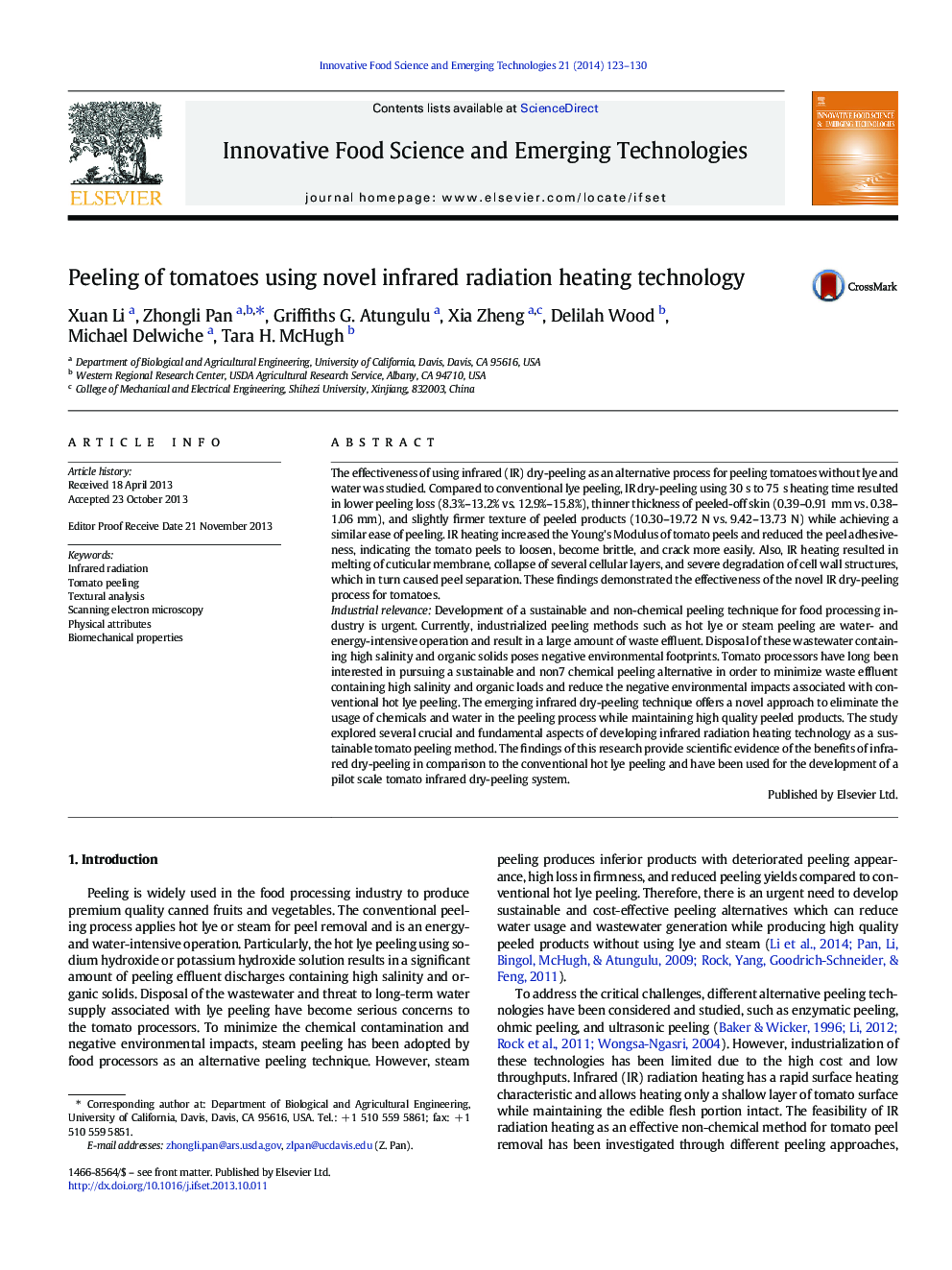| کد مقاله | کد نشریه | سال انتشار | مقاله انگلیسی | نسخه تمام متن |
|---|---|---|---|---|
| 2086763 | 1545545 | 2014 | 8 صفحه PDF | دانلود رایگان |
• We investigated using IR radiation for tomato peeling without water and lye.
• Peeling performance and peeled product quality were compared for IR and lye peeling.
• IR heating increased the Young's Modulus of tomato peels and reduced the peel adhesiveness.
• Microstructural changes induced by IR radiation caused peel loosening and cracking.
• Results demonstrated the effectiveness of the new IR dry-peeling process for tomatoes.
The effectiveness of using infrared (IR) dry-peeling as an alternative process for peeling tomatoes without lye and water was studied. Compared to conventional lye peeling, IR dry-peeling using 30 s to 75 s heating time resulted in lower peeling loss (8.3%–13.2% vs. 12.9%–15.8%), thinner thickness of peeled-off skin (0.39–0.91 mm vs. 0.38–1.06 mm), and slightly firmer texture of peeled products (10.30–19.72 N vs. 9.42–13.73 N) while achieving a similar ease of peeling. IR heating increased the Young's Modulus of tomato peels and reduced the peel adhesiveness, indicating the tomato peels to loosen, become brittle, and crack more easily. Also, IR heating resulted in melting of cuticular membrane, collapse of several cellular layers, and severe degradation of cell wall structures, which in turn caused peel separation. These findings demonstrated the effectiveness of the novel IR dry-peeling process for tomatoes.Industrial relevanceDevelopment of a sustainable and non-chemical peeling technique for food processing industry is urgent. Currently, industrialized peeling methods such as hot lye or steam peeling are water- and energy-intensive operation and result in a large amount of waste effluent. Disposal of these wastewater containing high salinity and organic solids poses negative environmental footprints. Tomato processors have long been interested in pursuing a sustainable and non7 chemical peeling alternative in order to minimize waste effluent containing high salinity and organic loads and reduce the negative environmental impacts associated with conventional hot lye peeling. The emerging infrared dry-peeling technique offers a novel approach to eliminate the usage of chemicals and water in the peeling process while maintaining high quality peeled products. The study explored several crucial and fundamental aspects of developing infrared radiation heating technology as a sustainable tomato peeling method. The findings of this research provide scientific evidence of the benefits of infrared dry-peeling in comparison to the conventional hot lye peeling and have been used for the development of a pilot scale tomato infrared dry-peeling system.
Journal: Innovative Food Science & Emerging Technologies - Volume 21, January 2014, Pages 123–130
